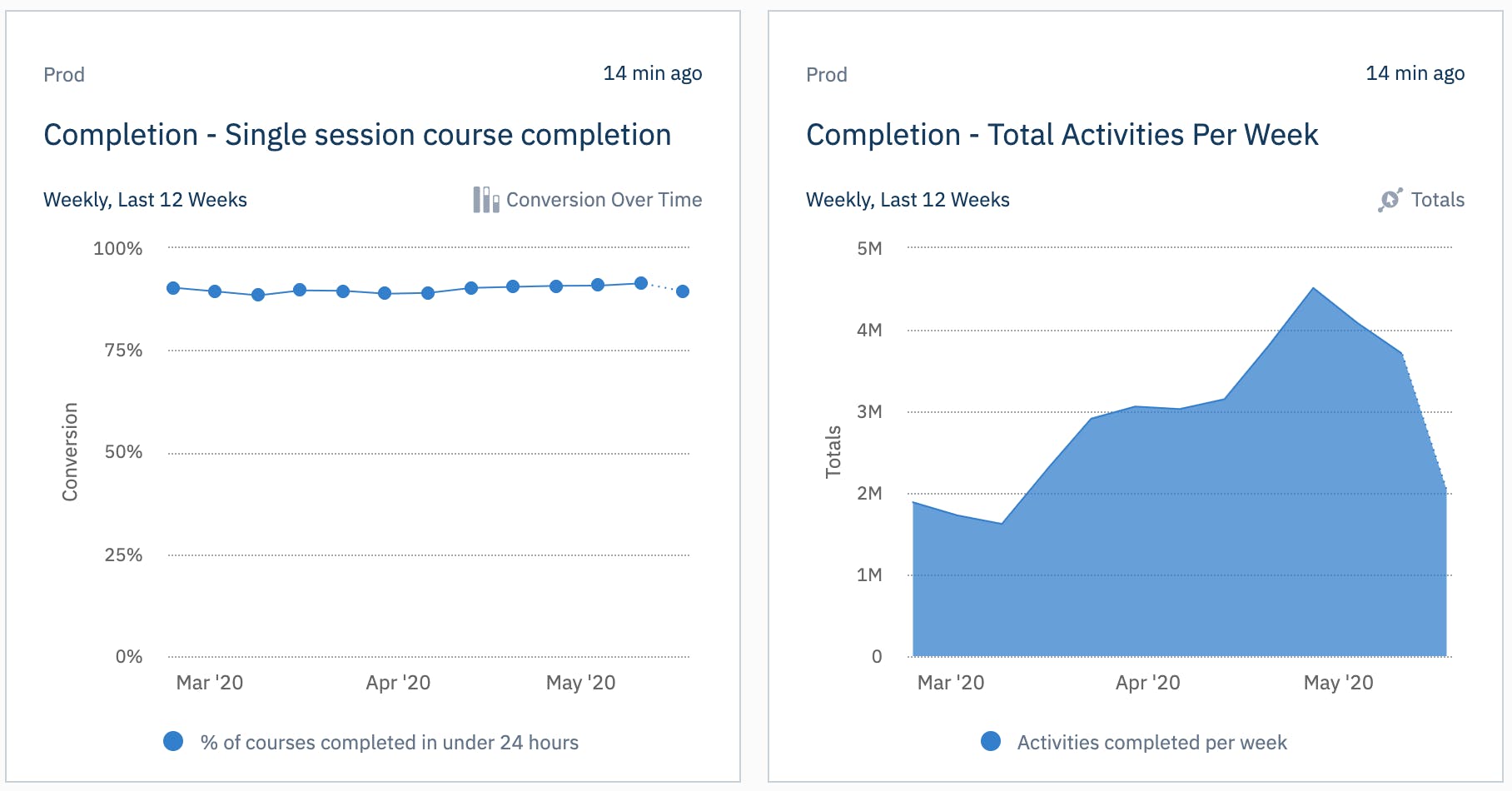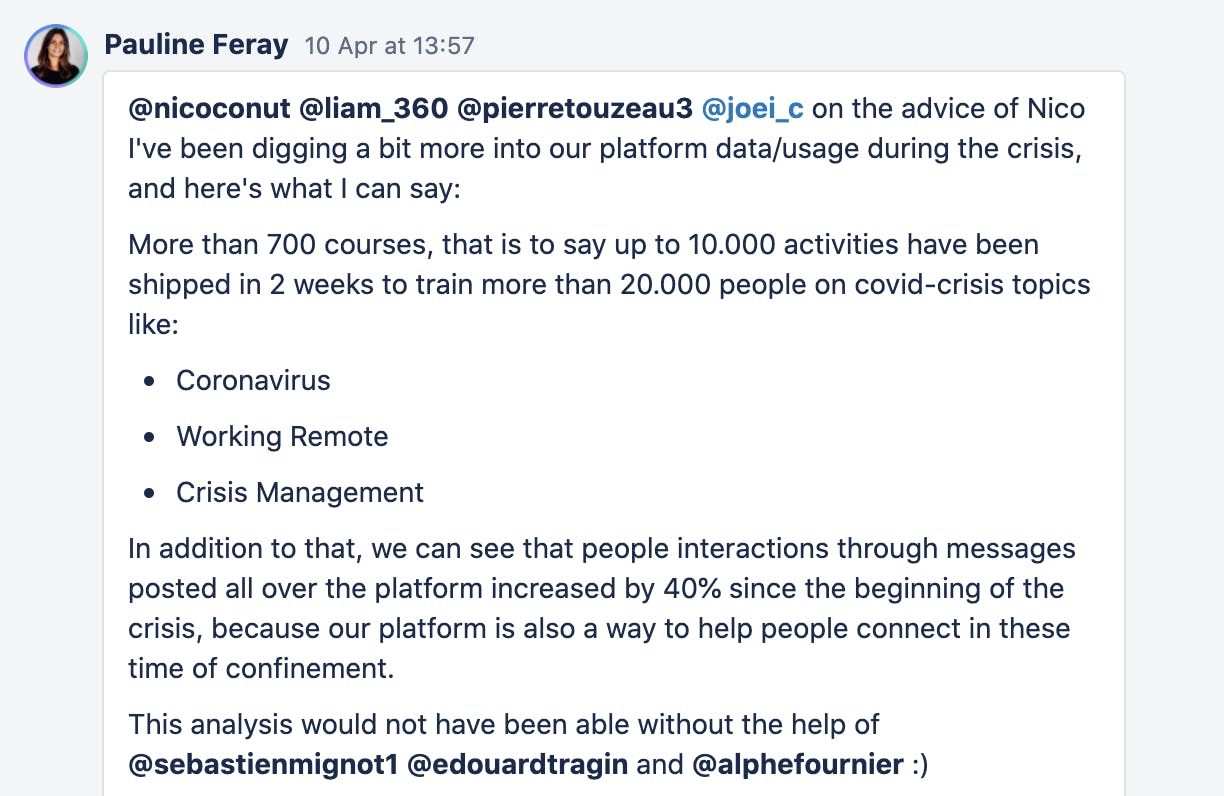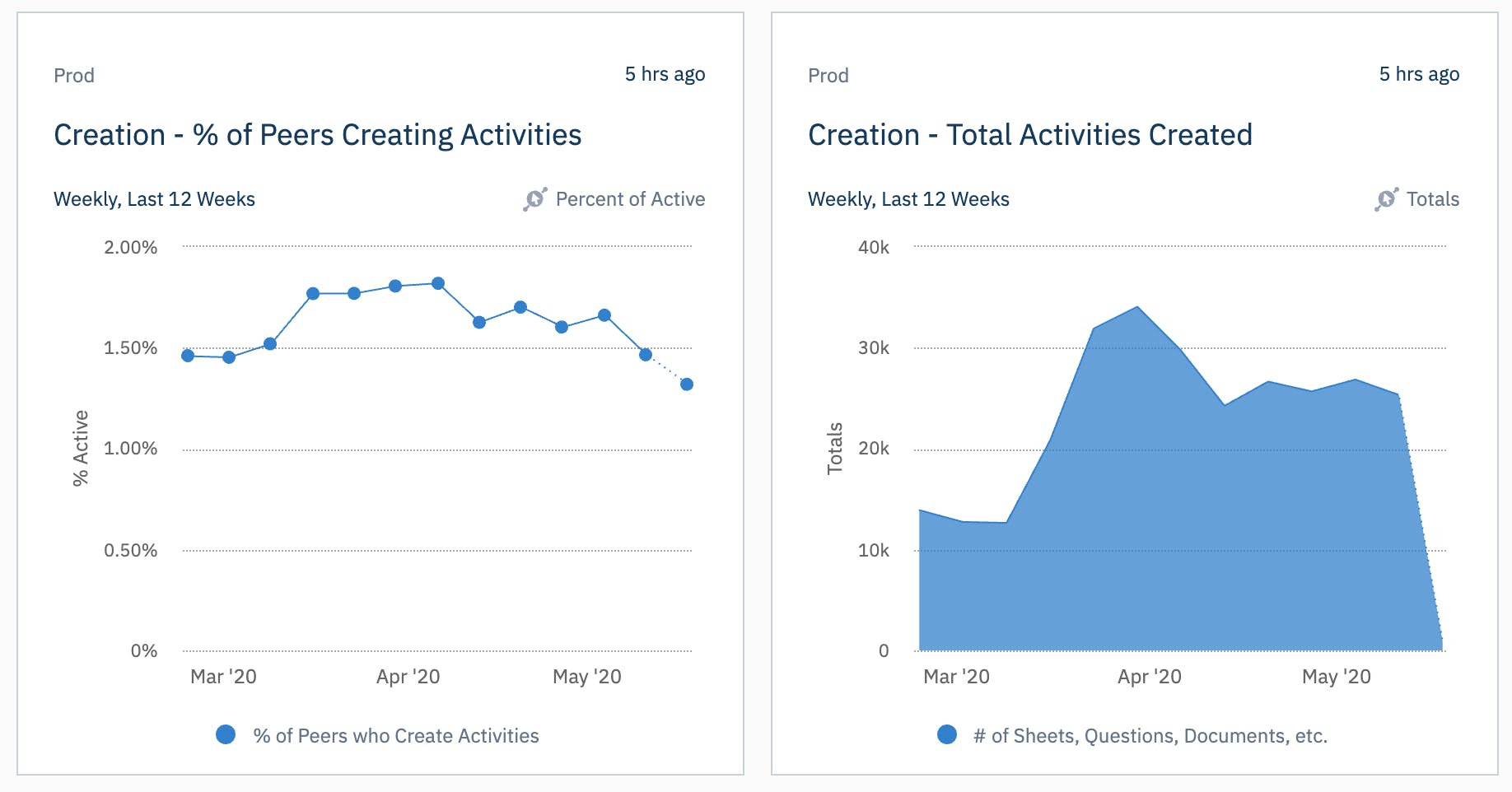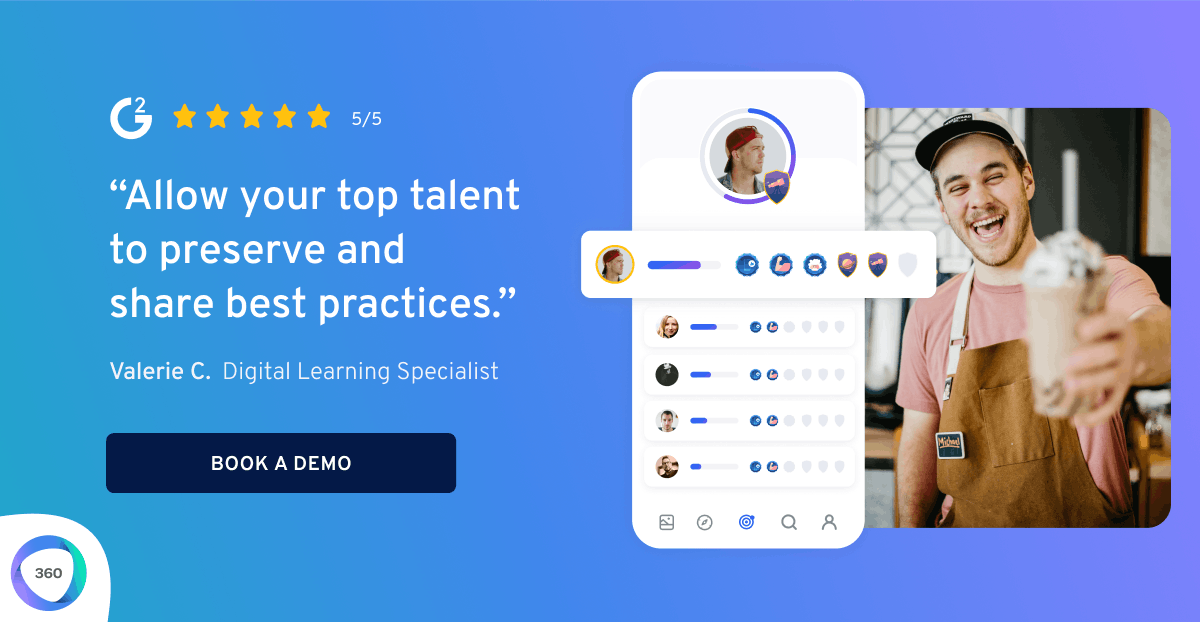COVID-19 has challenged many of the ways that teams traditionally share knowledge, formally and informally.
Face-to-face meetings are literally impossible, water-cooler conversations non-existent.
In an article earlier this month, venture capitalist Tomasz Tunguz asked “How would you manage your business differently if shelter-in-place lasted 18 months or more?”
Internal communications, Tunguz says, are a business's core advantage: you can only steer a ship as fast as you can communicate the new directions to every team member.
We’ve watched in 2020 as learning has taken a front seat. Many companies choose not only to communicate rapid changes to their organization but to source questions from their employees.
Previously, companies tolerated handling ad-hoc requests from team members on information that a training initiative would’ve otherwise solved; Sales team asking for a refresher on a particular use case on Slack; New employees adding an Asana task for HR to teach them to submit expenses that they supposedly learned in their onboarding program...the list goes on.
As COVID-19 forced us to work from our living rooms, it has also forced us to end this tolerance for ad-hoc requests and lack of process. Our way of working has changed, and so should our way of learning.
You can only steer a ship as fast as you can communicate the new directions to every team member.
At 360Learning, we follow three key categories of metrics - Creation, Collaboration, and Completion - to understand how learning is happening for 1 Million+ employees at 1,000+ organizations. Today, I’d like to share some interesting statistics from our Collaborative Learning platform and what that tells us about learning at the workplace during COVID-19.
Completion: 178% more learning happening in lockdown

Since March, learning is up nearly 200% on our platform, as many teams reacted quickly with courses on critical topics around health and operations. Despite the increase of learning, we’re seeing that same-day course completion (the % of courses that are completed within 24 hours of being started) hovers consistently around 90%.
Just a few weeks after the COVID-19 crisis broke out, our Product Manager, Pauline Feray, saw over 700 courses were created and shipped in 2 weeks on topics related to helping employees understand the crisis and transition to the new way of working.

It’s no surprise to see learning shifts from beneficial to mission-critical when business operations change quickly. And the best course of action needs to be taken quickly and in sync.
Forward-thinking companies adopted a rapid response in the early days of COVID-19, communicated quickly and often to employees, and are seeing the benefits of those decisions already.
Creation: 85% of course creators are not trainers

Following creation metrics allow us to see not only how much new knowledge is being shared, but also where that knowledge is coming from.
Since the start of shelter-at-home procedures around the world, we’ve seen a 100% increase in the amount of knowledge being shared. We also saw a 50% increase in the % of active users creating content on the 360Learing platform.
The former tells us that as teams now mostly work from home, sharing knowledge has become that much more important. The latter tells us that the decentralization of course creation is on the rise as companies go remote.
That anyone be in a position to share knowledge is a core pillar of Collaborative Learning, and what we’re seeing on 360Learning today is that, while Learning & Development make up just 0.3% of organizations on average, nearly 2% of team members are creating course content on 360Learning. This means that the majority of course content is not created by L&D team members.
Companies that have put in place practices to share tribal knowledge, facilitated by knowledge bases (Notion, Confluence, Google Docs) and communication tools (Slack, Teams, Discord) are taking the next step by giving team members the tools they need to formalize tribal knowledge into courses for new employees, new customers, new product releases, and more.
Collaboration: 25% of peers are improving courses through feedback

As peers become more comfortable learning from each other and not just from a trainer or an anonymous expert on a course video, our statistics show they are getting more invested in the continuous improvement of courses.
Each new course taker is an opportunity for course creators to get feedback on what’s working. When the lockdown started in mid-March, we saw a spike in the % of learners providing feedback. Up to 25% of peers provide feedback and collaborate through our instant feedback reactions and in-module forums. This valuable engagement and feedback are critical to improving course material.
Without feedback, courses get out-of-date. Who hasn’t joined a new company’s onboarding program only to find out-of-date facts, figures, and sales pitches? Because peers are learning from each other, they are more committed to making learning work for others. Each new comment, question, reaction, or suggestion provides course creators with data points that tell them what’s working and what needs work.
Get your team ready for what’s next with Collaborative Learning
I hope these metrics have been useful for you and give you an interesting benchmark to evaluate how well your organization is leveraging learning today.
If you’re interested to implement Collaborative Learning in your company, feel free to request a live demo.



